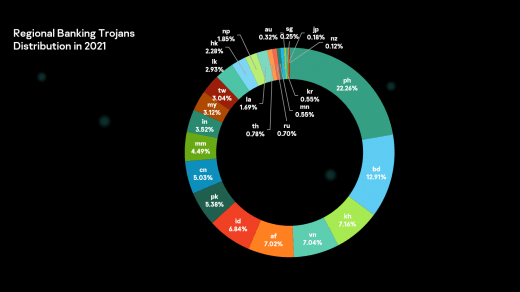Small businesses are prone to financial uncertainties, and it’s more difficult for them to maintain stable growth and sustainability. So, it is essential to manage and forecast financial risks effectively.
In this article, we will cover the main strategies and tools that empower small businesses to forecast and address financial risks.
Potential Financial Risks Assessment and Analysis
Financial risk refers to the possibility of financial loss or reduced profitability in a small business. Thus, every business owner must assess and analyze potential financial risks for long-term success. This ongoing process can’t be overlooked, as it will have negative consequences for the company.
Here are the main types of financial risks:
- Market risk refers to economic shifts, changes in consumer behavior, and other external factors that can impact a company’s bottom line.
- Credit risk is another critical element that demands careful evaluation, customers’ creditworthiness assessment, and payment pattern checks.
- Liquidity risk refers to the inability of a company to pay its current obligations. It also shows a company’s inability to quickly convert its assets into cash to make timely debt payments.
- Cybersecurity risk comes with technological advancements. Small businesses must thoroughly analyze potential cyber risks to protect their sensitive financial information from cyber threats.
- Operational risk includes supply chain disruptions, regulatory changes, and unexpected events like natural disasters.
- Strategic risk is associated with poor strategic planning, market positioning, or mergers and acquisitions.
- Competitive risk is influenced by the performance of other companies in the same market.
A financial risk assessment and analysis enables a small business owner to identify the risk levels specific to the company, prioritize them, and develop strategies to avoid them. But to create strategies for mitigating financial risk, it is necessary first to identify potential financial risks.
Identifying Risks
Identifying financial risks is crucial for effective risk management for any business. Start by identifying the array of risk factors that the business faces right now or can encounter in future. Consider internal risks, such as costs, prices, inventory, etc, and external factors, like changes in the industry, government regulations, technological advancements, changes in staffing, and other relevant aspects.
Analyze Risks
After identifying financial risks, analyze each risk to assess its likelihood of occurrence and the potential consequences it may entail. Start by checking the consistency of the business’s profit generation. A robust profit margin lets the business owner quickly identify cash flow disruptions and take appropriate actions.
Analyze each financial risk by asking these questions:
- What is the probability that the risk will occur?
- If this risk occurs, how would it affect the business?
- If this risk affects the business, what actions can the business initiate for recovery?
- What proactive steps can the business take to prevent or prepare for the occurrence of this risk?
By thoroughly analyzing these risks, the business can understand which are the priority risks and prepare a detailed risk management plan with targeted actions.
Effective Risk Management Strategies
In the current business environment, changes are constant and unpredictable. So, companies must adopt robust risk management strategies to protect their operations, assets, and long-term goals.
Diversification of Revenue Streams
Diversification of revenue streams is a strategic approach that involves expanding the sources of income. It reduces the company’s dependence on a single revenue stream. The following strategies will help them to diversify the revenue streams effectively:
- Conducting a comprehensive business assessment and identifying strengths, weaknesses, and areas where the company needs diversification.
- Understanding customers’ needs and market trends to find new opportunities and areas where the current products or services can meet evolving demands.
- Evaluating the current products the business offers to find opportunities for expansion or modification, considering possible connections or complementary products.
- Exploring new market segments that align with the business’s strengths, allowing for expansion into new customer demographics.
- Keeping up with technological innovations and exploring how incorporating new technologies can open up innovative revenue streams.
Strategic Partnerships
Businesses form strategic partnerships to achieve mutual benefits and growth. Strategic partnerships are collaborative alliances with shared objectives. Entities use each other’s strengths and resources for strategic advantage.
Building strategic partnerships is an integral aspect of business development that allows organizations to tap into complementary expertise and access new markets and opportunities. It enables companies to share risks, reduce costs, and enhance their overall value proposition.
AR Effective Management
Accounts receivable (AR) refers to the sum of money a company has yet to receive from its customers for goods or services provided on credit. Effective accounts receivable management is crucial for maintaining a healthy cash flow in any business and minimize the possibility of bad debts and disputes with business partners.
To improve AR management:
- Implement proactive measures.
- Streamline invoicing processes.
- Use advanced software and technology.
- Regularly monitor and analyze accounts receivable aging reports.
- Establish clear and transparent credit terms.
- Build strong relationships with business partners.
- Offer discounts for early payments.
Many businesses handle the account receivables in-house or hire third-party companies, considering the potential benefits of outsourcing AR management.
Financial Forecasting
It is a strategic process essential for businesses to predict future financial outcomes based on historical data and market trends. Financial forecasting is a valuable tool for strategic planning that allows businesses to make informed decisions and identify potential financial risks and uncertainties. All in all, financial forecasting leads to better financial outcomes and more stable cash flow.
At this point, businesses must also weigh the risk of various business debts, including outstanding invoices, loans, or credit obligations. It’s crucial to have a strategy that follows legal business debt collection requirements to minimse future risks.
Small Business’s Financial Risks Ongoing Monitoring and Adaptation
Monitoring and adapting to financial risks is crucial for the sustained success of small businesses. Regularly assessing financial risks allows businesses to identify potential threats to their financial stability, such as market fluctuations, economic downturns, or unexpected expenses.
Ongoing monitoring ensures that small businesses stay proactive in their financial management, enabling them to promptly address emerging issues. Adaptation involves implementing strategic changes, like adjusting budgets, diversifying revenue streams, or renegotiating contracts, to mitigate identified risks effectively.
The article is written by Nadya Morison, who is a data analyst, content researcher, and beginner journalist.
Reviewed by Giles Goodman, a Credit Industry Expert and the founder and CEO of Payfor Ltd.




Recent Comments